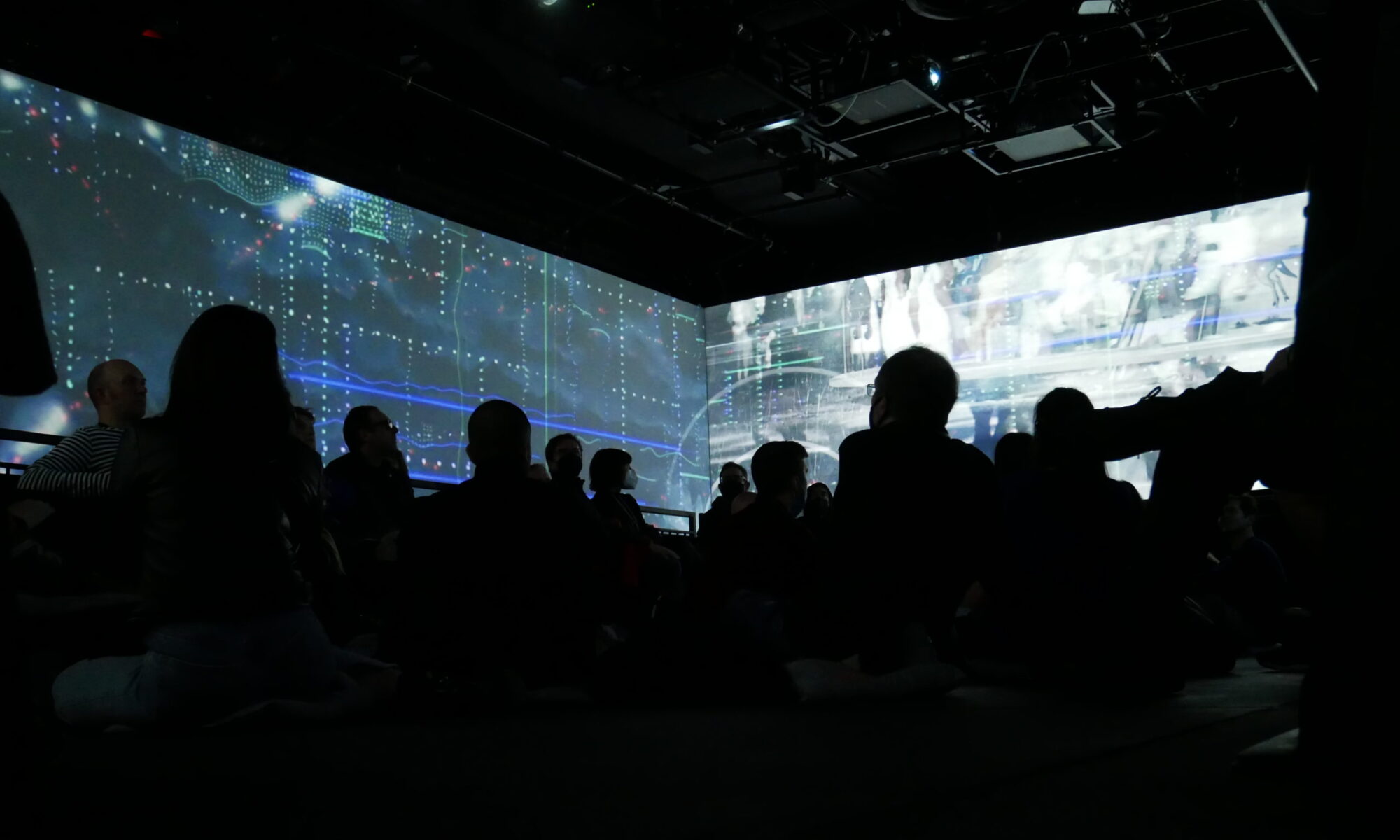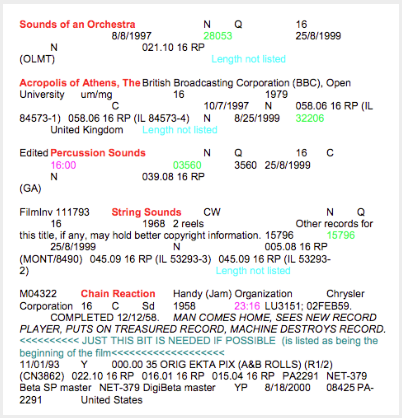Danny Snelson – Incredible Machines – We Edit Life
Danny Snelson presents a series of investigations around an essay on early computer-generated movies at Bell Labs (and the documentaries that accompany them) through the contemporary cipher presented in the digital compilation movie We Edit Life (2002) by People Like Us (Vicki Bennett).
Radio Web MACBA in Conversation with Vicki Bennett
 MEMORABILIA. COLLECTING SOUNDS WITH… VICKI BENNETT
MEMORABILIA. COLLECTING SOUNDS WITH… VICKI BENNETT
Vicki Bennett recently discussed the subject of music collecting with Anna Ramos of Radio Web MACBA.
Here is the conversation (also downloadable in pdf form):
http://rwm.macba.cat/en/extra/conversation_vicki_bennett/capsula
EXTRA
EXTRA compiles miscellaneous research materials generated through the activities of RWM. The section includes conversations with artists and curators, additional documentation and transcripts of programs, with the aim of offering a more complete vision of the different research lines of the RWM project.
Later in the year in October RWM will also publish a radio mix and essay by Vicki.
Collateral Damage in The Wire Magazine, March 2012
Vicki Bennett has written the Collateral Damage page for the March edition of The Wire magazine.
http://thewire.co.uk/issues/337/
It is also available to read in The Wire’s online archive:
http://thewire.co.uk/in-writing/essays/collateral-damage_vicki-bennett

Vicki will also speak at Off The Page in Whitstable on 25th February 2012 as part of a panel based around the same column.
http://www.peoplelikeus.org/2012/off_the_page_the_wire_sound_and_music.html
Collateral Damage: Vicki Bennett
February 2012
In the early 2000s, increased bandwidth allowed recombinant artists to enter the gift economy. It’s a freedom we should defend at all costs, argues Vicki Bennett aka People Like Us
In 1999 I bought my first fast computer – and although it was dying to do speedy things, I was on dial-up, reduced to a crawl when it came to information retrieval. Logged into file sharing communities, I’d sit in the chat and watch people posting files that would take me a day to download, so I’d just read about them. Then I’d go to the WFMU website and try to stream the station and just get blurts and gaping silences. Then I’d visit archive.org and look at all the wonderful synopses for Rick Prelinger’s films, which were too large to access. It wasn’t long, however, before affordable broadband reached my area of London. Then everything changed. Forever.
The biggest improvement that broadband has brought me is access to previously inaccessible content, which I can then work with as raw material. In 2000, Internet Archive founder Brewster Kahle asked Prelinger to share his films online, for free. Although Prelinger was initially wary of this suggestion, he did so. By making these films available in good quality and continuing to sell the same footage in high quality, not only did he advertise his commercial archive, but also this generous act had a revolutionary effect on artists like myself who utilise already existing footage to make new works. Before this, I’d approached regional and national archives and either found a total lack of interest in collaboration, or a bigger interest but lack of manpower to liaise in realising the project. The advent of broadband made it possible to share on a massive scale. It changed my life.
With more people producing and distributing for themselves, the dynamic has changed and the focus shifted away from the middleman towards the producer. Since 2000, albums I’ve made with Ergo Phizmiz and Wobbly were created remotely, as a result of being in different parts of the world, through ftping multitracks. Many are surprised to hear that such methods could be successful, but working alone on site, and in collaboration online, can be a winning combination. Once completed, it can be shared online. If you work with the right people you’ll reach thousands of listeners. In turn, some of those listeners will be working in areas where they can offer concerts, commissions, or play you on their radio show. This is called the Gift Economy.
Audio content both for People Like Us and my radio show has mainly been sourced online. This heightened access increased my musical knowledge massively, feeding into my creative process, the palette increasing in size and colour. Access to and hosting by curated servers like UbuWeb has given a wider context to my work, where I’ve found aesthetic similarities to genres that in turn inform my practice. As well as curated music servers, there are now thousands of dedicated, knowledgeable music blogs. A web search for an obscure artist heard on the radio will take you to a blog telling you all about them, sharing out-of-print material, with tags linking to related areas. An adjacent column will have links to 25 other websites and radio stations with similar interests. There then follows a wonderful odyssey into hidden and often forgotten sonic worlds. This is very different from looking in an Oxfam record bin.
As well as being able to access specialist audio and moving images, broadband also made it possible to hear radio on a worldwide scale. Although analogue radio has long served the world over certain wavelengths for larger radio networks, it was an amazing experience to hear smaller radio stations like WFMU, where, as a result, I have been a DJ since 2003. WFMU archives its past shows forever, making them available for free listening. When Googling a little-known artist, the chances are the results will include a WFMU playlist. This helped make the local New Jersey radio station a global concern – and now, more people listen online than through radio receivers.
With this enhanced access in the past decade, one is far more likely to hear more less often than less more often. This shifts the way one listens, as the process becomes more like a ‘one-off’ experience of something that is ‘live’ or ‘unrepeatable’, almost like it was before the age of recording. Cassette sharing has been replaced with links and playlists. The physical experience of holding something as a treasured possession is lost, or it would be if you’d put your laptop or iPhone down. The loss of the artefact in favour of info.txt and jpegs is unfortunate; however, I recall many hours spent in record stores only looking at the covers.
In Klaus Maeck’s 1983 film Decoder, Genesis P-Orridge states, “Information is like a bank. Our job is to rob that bank.” These were prophetic words. Freedom of the internet is under threat – over access to and ownership of information. Although I don’t see sharing and creatively transforming information and content as plundering, I do believe the ‘banks’ have the potential to lock up a lot that should rightfully be ours. When Megaupload was recently shut down for facilitating copyright infringement and money laundering, approximately 150 million users instantly lost access to their files. Carpathia and Cogent, Megaupload’s hosting companies, have been told by the US authorities that they are free to delete the content, but unlike the US government’s approach of throwing out the baby with the bathwater, Carpathia has put together a website (megaretrieval.com) with the Electronic Frontier Foundation (EFF) so that affected users can assess the scope of the issue and try to retrieve their data. My focus here is not on the legal aspect of this case, but on how further damage occurs when a heavy-handed approach is taken in dealing with such a situation – millions of users were innocently implicated in this case and the collateral damage is immense.
We may be at the stage where many people don’t even wish to download, and are just happy to listen to Spotify or Last.fm, and much future content will only be on servers, with smaller domestic hard drives. While advocating the sharing ethic, I’m wary of ‘the cloud’ – servers looking after everything for you. Megaupload was a ‘cloud’ – it remains to be seen what happens to users and their data when things go wrong. Intellectual property is a complicated issue with many grey areas, which need to be assessed on an individual basis. If there is the opportunity to throw out the grey with the black, this is often done. My main concern over the cloud is that this ‘automatic and effortless’ experience of access may be improved upon by eventually narrowing down results to only mainstream or sponsored content; in the worst cases, people may find themselves simply shut out.
I can’t over-emphasise how much broadband has improved my life, and although I worry about the control of this ‘free’ space, I remain optimistic of seeing blue sky between the clouds. At present, I am curating and programming Radio Boredcast, a month long online radio station for the AV Festival. All content and submissions reached me by way of that modem sitting next to the telephone socket, which then flew across the living room into my computer. I don’t know how that happens, but I’m glad it does.
Documentation of the People Like Us Retrospective at alt.gallery
Documentation of the People Like Us Retrospective at alt.gallery
alt.gallery (entry via alt.vinyl) 61/62 Thornton Street, Newcastle upon Tyne, NE1 4AW.
http://www.altgallery.org/
16 May-12 July 2008
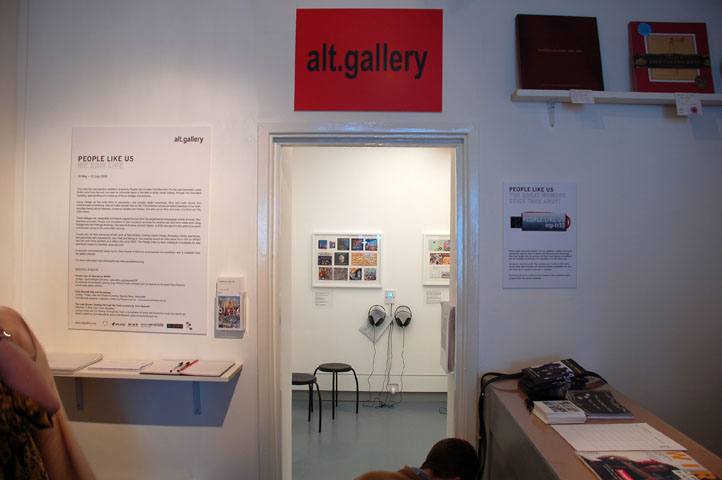
alt.gallery is pleased to announce the first retrospective exhibition of work by People Like Us (aka Vicki Bennett).
ARTIST INFO
For the past seventeen years British artist Vicki Bennett has been an influential figure in the field of audio visual collage, through her innovative sampling, appropriating and cutting up of found footage and archives. Using collage as her main form of expression, she creates audio recordings, films and radio shows that communicate a humorous, dark and often surreal view on life. The exhibition will focus on the concept of collage, showing an edited selection of her work, including twenty album releases, numerous singles and remixes, live sets, seven films and over a hundred and fifty radio shows. These collages mix, manipulate and rework original sources from both the experimental and popular worlds of music, film, television and radio. People Like Us believe in open access to archives for creative use, and have made work using footage from the Prelinger Archives, The Internet Archive, and A/V Geeks. In 2006 she was the first artist to be given unrestricted access to the entire BBC Archive. People Like Us have previously shown work at Tate Modern, Sydney Opera House, Pompidou Center and Sonar, and performed radio sessions for John Peel and Mixing It. The ongoing sound art radio show ‘Do or DIY’ on WFMU has had over a million “listen again” hits since 2003. The People Like Us back catalogue is available for free download hosted by UbuWeb.
MEMORY STICKS

Every week during the exhibition a different collection of special downloads from the People Like Us archive will be available from the gallery, bring your memory stick along for a free take away!
ESSAY BY DR DREW DANIEL
A specially commissioned essay by Dr. Drew Daniel of Matmos accompanies the exhibition. Download pdf here. Drew’s essay can also be linked to here

Download a larger version of this flyer here
Download the poster (featured top right) here
The exhibition also included a framed essay by Rick Prelinger on The Virtues of Preexisting Material. Here is an excerpt:
On the Virtues of Preexisting Material
© Rick Prelinger 2007
Licensed under Creative Commons Attribution License
1 Why add to the population of orphaned works?
2 Don’t presume that new work improves on old
3 Honor our ancestors by recycling their wisdom
4 The ideology of originality is arrogant and wasteful
5 Dregs are the sweetest drink
6 And leftovers were spared for a reason
7 Actors don’t get a fair shake the first time around, let’s give them another
8 The pleasure of recognition warms us on cold nights and cools us in hot summers
9 We approach the future by typically roundabout means
10 We hope the future is listening, and the past hopes we are too
11 What’s gone is irretrievable, but might also predict the future
12 Access to what’s already happened is cheaper than access to what’s happening now
13 Archives are justified by use
14 Make a quilt not an advertisement
Download a pdf of the full text here, or link to the essay here.

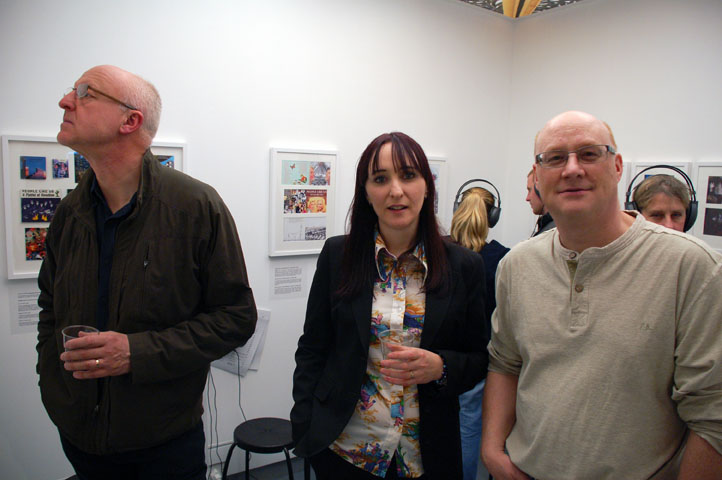
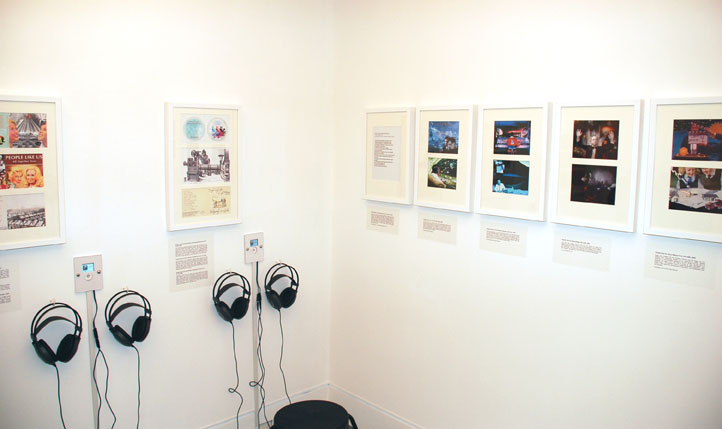
The exhibition will also launch a new CD curated by Vicki Bennett for Sonic Arts Network called ‘Smiling Through My Teeth’, a compilation of humorous music and sound art.
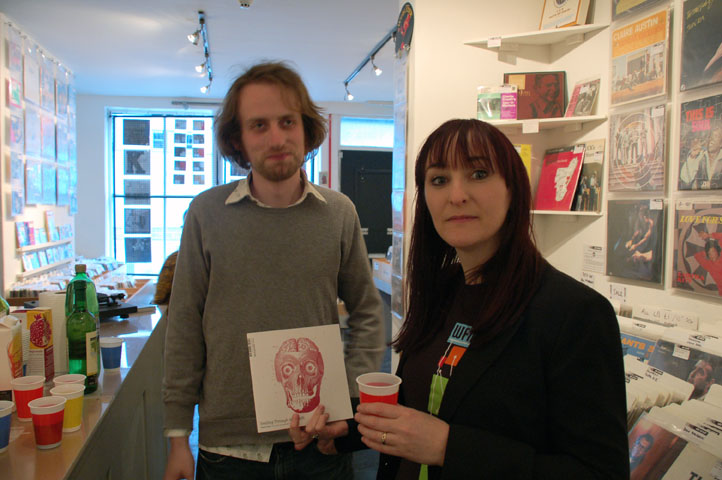
SPECIAL EVENTS
People Like Us Special on WFMU
Thursday 15 May, 11pm-midnight (UK time) www.wfmu.org/playlists/ER – To celebrate the exhibition opening Ergo Phizmiz hosts a People Like Us Special on his show ‘Phuj Phactory’ on WFMU, both on terrestrial radio and live internet stream.
People Like Us Talk and Screening
Friday 16 May, 7:30pm
Star and Shadow Cinema, Stepney Bank, Newcastle
Vicki Bennett presents a selection of films by People Like Us.
The Late Shows: Smiling Through My Teeth CD Launch
Saturday 17 May, 7pm-11pm
alt.gallery
www.altgallery.org

The Late Shows form part of NewcastleGateshead’s world-class festivals and events programme. www.thelateshows.org.uk

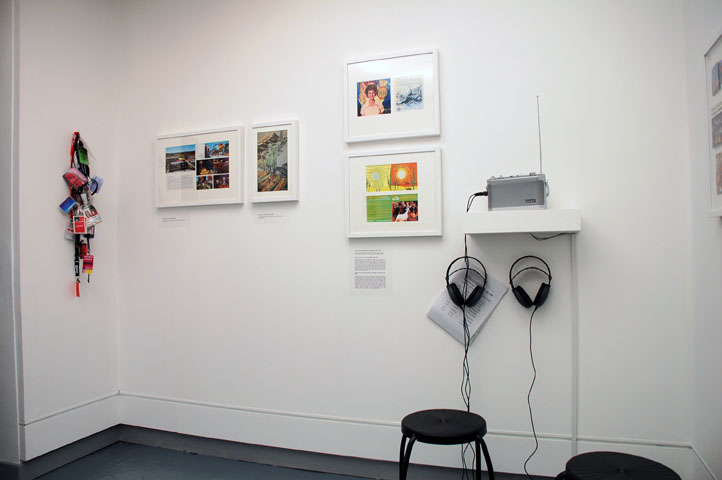
Many thanks to Rebecca Shatwell for inviting us to do this retrospective, it was great fun to work together. Rebecca is now director of AV Festival.

Continue reading “Documentation of the People Like Us Retrospective at alt.gallery”
On the Virtues of Preexisting Material by Rick Prelinger
On the Virtues of Preexisting Material
© Rick Prelinger 2007
Licensed under Creative Commons Attribution License
1 Why add to the population of orphaned works?
2 Don’t presume that new work improves on old
3 Honor our ancestors by recycling their wisdom
4 The ideology of originality is arrogant and wasteful
5 Dregs are the sweetest drink
6 And leftovers were spared for a reason
7 Actors don’t get a fair shake the first time around, let’s give them another
8 The pleasure of recognition warms us on cold nights and cools us in hot summers
9 We approach the future by typically roundabout means
10 We hope the future is listening, and the past hopes we are too
11 What’s gone is irretrievable, but might also predict the future
12 Access to what’s already happened is cheaper than access to what’s happening now
13 Archives are justified by use
14 Make a quilt not an advertisement
– – – – – – – – –
No one loves manifestos more than their writers, which means that they often require interpretation and maybe even translation into real-world language. So what I’m going to do is take my 14 points and expand them into ideas. Some of these might sound trendy, but I think they’re actually traditional — they’ve been in and around the culture for a long time.
1 Why add to the population of orphaned works?
This is meant to provoke, of course. I might as well have asked, “why make new work while old work still exists?” That would be an argument for stasis, but I’m not seeking that — I’m seeking movement.
We live in a tremendously media-rich society. Every year Americans throw away more text, sound and image than most other nations create. We’re the world capital of ephemera, and much of it has no active parent.
Orphaned works — which are works that are still owned by somebody, but a somebody that can’t be found — testify to the absurdities that arise when products of the intellect are automatically born as property, which is the way our copyright law now reads. There are millions of orphaned works out there floating in limbo. You can reproduce them or work with them if you like, but if the derivative work you make rises above a certain horizon of obscurity, you run the risk of being sued. We are trying to come up with a better set of rules, but it’s very difficult to change copyright law unless you run a studio or a record company. There are literally hundreds of thousands of great books we’d like to scan and put on the Net, but can’t because of their orphan status.
The real issue, of course, is that we need to convene and decide how deeply we want to connect culture and property. And when we’ve settled on a particular mix, we might think about whether it maximizes our freedom to speak, to learn and to inquire — in short, whether it leads to the kind of a world we’d want to live in. This will not be an easy conversation — it’s hardly even begun. But one way we can move towards more open cultural distribution and exchange is to make our own works as accessible as possible. We can do this by limiting restrictions on reuse to the absolute minimum, by using permissive licenses, like the Creative Commons licenses, that say “use me this way, it’s OK,” and by using copyright homeopathically rather than as a weapon of shock and awe.
2 Don’t presume that new work improves on old
The ephemera we produce tend to manifest ideas that fix themselves over and over again in different media. What this suggests to me is that we might be more open to letting old works speak, that our task might not be so much to make new works but to build new platforms for old works to speak from. This might mean that we weave using others’ threads, that we take positions as arrangers rather than as sculptors.
Collage often does this. In recent years we have come to understand collage largely as an assembly of small units — as the equivalent of words, syllables or even phonemes. Collage has migrated from the arts and crafts we associate with folk culture into digital culture, speeding up and fragmenting along the way. Value-free, I want to propose that collage might also work in larger units, as sentences, paragraphs, chapters, even entire books. This kind of collage works slowly and in stealth, and will ultimately affect the way that we contrast new and old works.
3 Honor our ancestors by recycling their wisdom
Take this with a grain of salt. I’m not good at ancestor worship and don’t know if I’d recognize wisdom when it’s in front of me.
But I’m going to argue here against eternalizing the present. Just because we’re in the middle of a condition that we call X doesn’t mean it’s always been X. Who would have thought that glaciers would start breaking up? Who could have predicted that honeybee populations would shrink? Who foresaw the breakup of the Soviet Union? And who among us recognizes that the 50 United States will grow to more or shrink to less than 50 as time passes?
Recycling the so-called wisdom of the past can problematize the present and encourage people to ask harder questions. When we inject history into contemporary experience, we are making an historical intervention, which can have dramatic consequences — if we listen.
This is why we’ve put ephemeral films online and why we’re now scanning books, most of which weren’t written by famous authors.
4 The ideology of originality is arrogant and wasteful
Many others have said this better than I can. It’s folly to make too much of originality. So much of what we make rests on work that’s come before. Let’s admit this and revel in it. Though it might make some people nervous, it actually cushions us in a genetic continuity of expression, and what could be more reassuring?
Last month, I went to a great lecture by Drew Daniel and Martin Schmidt from Matmos at the beautiful Hearst Mining Building. Drew laid out the history and promise of 1960s and 1970s conceptual art and talked about how it informed the work they do. One of the most provocative legacies of conceptual art was de-commodification — departing from object-oriented artmaking and from the tyranny of the art market. And yet it struck me that de-commodification had actually created its opposite. Conceptual works tended to exist primarily in their documentation, in physical traces of the work that had been created by someone so that the work would not disappear from consciousness. Documentation creates objects that are always someone’s property. The value of art documentation rests in whose work it documents and in who made the documents. We are therefore almost back where we started.
When you attend a performance, a demonstration or a happening, count the cameras and recorders. What’s the ratio of documentators to actors? Think of all the property that’s being created on the back of an event that may be nobody’s property, that may even be anti-property. Then think of identifying and unraveling those property rights forty years in the future.
5 Dregs are the sweetest drink
My partner Megan and I run a research library in San Francisco that we built around our personal book, periodical and ephemera collections. At some point it got a life of its own and started growing like mushrooms in Mendocino. Many of you know it because you’re our honored shelvers. We joke about how it’s a library full of bad ideas; I characterize it as 98% false consciousness. It’s full of outdated information, extinct procedures, self-serving explanations, ideas that never passed the smell test, and lies. And yet that’s where you find the truth. You can’t judge the past at its best, you need to confront its imperfections. And of course that’s true for the present as well.
I’ve been interested in labor history for a long time, used to collect books about it, many of them from the old Moe’s. When I began to collect industrial films I was struck by how much of the history of working people was contained in films made by corporations. In order to extract it you’ve got to engage in selective appropriation, but it’s there, often eloquently so. There’s a 1936 film called Master Hands which you can download from the Internet Archive; it’s a tribute to mass production at Chevrolet. But what it really shows is how elemental, dangerous and mind-numbing the work at Flint was. It’s a film no one else seems to have, and it’s now on the National Film Registry, but it was dregs — on a cold day in 1983, I paid a man not to throw it away.
Research is now indicating that kids who grow up on farms have fewer allergies later in life. The hypothesis is that exposure to manure immunizes them early on. City kids miss out. I hope you’ll all come visit the library, get your own dose of bad ideas and build up your immune system.
6 And leftovers were spared for a reason
Leftovers exist for lots of reasons, but my favorite reason is that they’re our raw material for performing operations on history. Whether it’s an individual filtering their family’s reality through a scrapbook or a marcher carrying a picture of a prisoner at Abu Ghraib, people use what’s left to us as leverage to document history or even change it.
7 Actors don’t get a fair shake the first time around, let’s give them another
I don’t know much about actors, really, and I’m not going to take you through the “long tail” argument. But I think that reincarnation through reuse confers importance, greater recognition, and respect on works and those who make them. Does it bring the makers money? It often does, and there are all sorts of experimental models out there. We ourselves make more money selling stock footage since we put the same footage online for free downloading.
Ubiquity raises value. Culture is an infinitely renewable resource. Does the value of “Stairway to Heaven” suffer because somewhere in America, someone’s playing it on the radio every thirty seconds?
Perhaps we’ll never know whether models of plenty beat out models of scarcity, but we may learn something as we experiment along the way and give actors a fairer shake.
8 The pleasure of recognition warms us on cold nights and cools us in hot summers
We add meaning to culture by remixing it. Putting something in a new context helps you see it with new eyes; it’s like bringing your partner home to the parents for the first time, or letting a dog loose to run in the waves.
We also infuse culture with new pleasure. When the maker who calls him or herself Otto Nomous made the short video The Fellowship of the Ring of Free Trade, he or she sought to decode the hidden prophecies contained in The Lord of the Rings and prove that it was an anarchist parable relevant to the present day. This video reveals the decoded dialogues through witty subtitles set in an Elvish typestyle. It is delightful and you can easily find it online.
Remixing is estrangement in the way the classic writers like Viktor Shklovsky and Bertolt Brecht described it. And yet the raw material remains familiar and recognizable. It’s at once a subversive and reassuring process. Some writers, like John Updike and not like Jonathan Lethem, fear the emerging mashed-up book. They hope their texts won’t be scrambled or altered, that they’ll always retain the same identity and continuity, and follow the same course. But rivers, like information, route themselves around obstacles, and the bends in rivers are where adventures happen. We’ll find new ways to experience and value old works as a consequence of mixing them into newer ones.
9 We approach the future by typically roundabout means
It’s said that storytelling is hardwired into our brains — that we respond most deeply and emotionally to storylines, characters and narrative arcs. You hear this from everyone, from folklorists to cable TV programming executives. You can’t drive a project through the distribution system if it lacks certain compulsory elements. You can, of course, employ traditional elements in novel and dramatic ways: this may get you awards.
Though I agree that stories wield power, I think this power is arbitrary. We believe in storytelling because we’ve naturalized the consensus that causes us to believe in it. There is no reason for this consensus not to change as the world changes. Storytelling as we know it is not an absolute, and it may slow the courses of culture and history. We value storytelling for its ability to wrap new skins on old skeletons, but even bones don’t last forever.
10 We hope the future is listening, and the past hopes we are too
It may be vain to hope that our works survive into the future and will be seen and listened to, but still we hope so. If we want to encourage those not yet born to think historically, we need to begin by thinking historically ourselves. This inevitably pushes us into the territory of preexisting materials.
11 What’s gone is irretrievable, but might also predict the future
For 20 years I collected old educational and industrial films. They were made to instruct and socialize young people with the objective of turning them into dependable workers, good citizens and avid consumers. 1980s audiences became fascinated with these films and a cult following developed.
I was psyched to see this happen, but became disenchanted with what to me seemed like superficial and ahistorical reactions to the films. For many people, they triggered regressive nostalgic reactions. Others treated them as surreal documents, as bizarre oddities, as the stuff of long-gone conspiracies to manufacture consensus. All of these were true in a way, but something seemed to be missing.
The breakthrough for me was to realize that these films didn’t just describe a lost past, but might also be tracing the contours of possible futures. In other words, we could see them not simply as antiquated, but as predictive. And this has in fact come true. Many of today’s suburban children live the walled-in lives of their 1950s counterparts. Corporate and government interests are conflated. We fear those we call terrorists as we once feared those we called communists.
We can’t go back to the world of the past, but sometimes the past overtakes us.
12 Access to what’s already happened is cheaper than access to what’s happening now
Sidewalk sales, dumpsters, library discard carts, Craigslist, your grandmother’s attic all contain masses of content just waiting to be cut up and reassembled. Every city has an outsider archivist who’s rescued some important collection of something from landfill and may be looking for collaborators. The past lies ready to be remade.
Yes, you can remix the present and upload it to YouTube, but they can take it down and they will, if you use content that someone else owns. The emerging digital media use electronic locks to inhibit reuse, and what you download on Saturday may vanish from your hard disk on Monday. We are beginning to turn fair use into a legal right rather than a legal defense, but we haven’t yet won.
Don’t shrink from remixing the present, but enjoy the freedom that comes with working with public domain material. The public domain is the coolest neighborhood on the frontier.
13 Archives are justified by use
This might seem obvious to you and me, but it doesn’t really work that way in the archival world. Until recently (and I generalize), archives focused more on preserving records than on providing access to them. Though this has begun to change, archives have had a really difficult time reengineering themselves and their culture to meet the vastly increased demand for their holdings.
Which brings us again to YouTube. In addition to generating lawsuits and refocusing mass culture onto a shrunken, fuzzy screen, it’s raised critical issues for archives. Media archives have tried to join the 21st century by putting little bits and pieces online. They face such opposition internally and from copyright holders that they’ve had to take baby steps. Now YouTube has raised public expectations, and it’s hard to see how any institution can meet them. In its first 12 months, YouTube built an easy-to-access online collection of some 7 million digital videos that I’d argue has become the world’s default media archives. Everything anyone does to bring archives online is now going to be measured against YouTube’s ambiguous legacy. It presents a massive collection of older and newer material, from video of Malcolm X’s complete speeches to clips of the moose I saw wandering in front yards in Anchorage. It sticks to preview mode, presenting visually degraded Flash video, so it will still get sued, but most rightsholders will rightfully regard what it does as promotion. Best of all, it allows users to upload almost anything and annotate with relative freedom. It is not an archives, but it’s outclassed archives at their own game.
In order for archives to survive while the YouTubes rule, they need to be used. And it is up to us to use the amazing things that they hold.
14 Make a quilt not an advertisement
Quilting is an early form of sampling. A patchwork quilt combines preexisting fabric from many sources. Quilting relies on what geeks call interoperability — the ability of elements to fit into a matrix and function together. That’s what makes the Internet work — machines and networks can talk with one another and freely exchange bits.
Interoperability requires openness. But today openness is threatened in many ways. While some companies have built business models around openness, many others haven’t. Right now, for instance, private companies are scanning books in publicly-owned and tax-exempt libraries around the world. Because the companies are paying for digitization, they control access to these new digital books, even though the books themselves may be in the public domain. Many online books let you see images of the pages, but don’t permit access to the raw text. You cannot cut and paste the text or grab it so you can index it yourself. That isn’t open, and these books don’t interoperate. You can’t weave a textual quilt using books from Project Gutenberg and books from Google. If we’re to build networked books, to freely cite the work of others and merge past and present, we need to make sure that openness is at the core of all of our activities. Cultural material needs to be shared and distributed as freely as the law allows.
But above all quilting is folk art, not corporate expression. It’s about turning leftovers into something that’s both transcendent and useful. It doesn’t have selling at its core.
Make a quilt, not an advertisement.
Story Without End – short film
Made using footage from the Prelinger Archives and A/V Geeks, this film explores how technology enables us to communicate faster. Despite advances in communication technology the film shows that the story of progress will never end; and that it leads to both connection and disconnection. The narrative is from a public domain film of the same name made in 1950 about the development of microwave radio transmission and the transistor.


Download at UbuWeb


We Edit Life – short film
Download from UbuWeb

Download a larger version of this People Like Us photooverlay created from scenes from We Edit Life by clicking on the smaller image below.

People Like Us visit Prelinger Archives:

